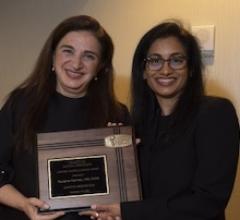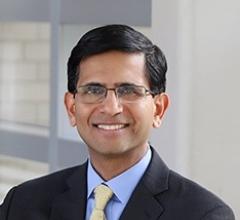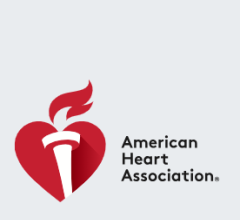
CPR Reenactment: A woman calling 9-1-1 before she and another bystander perform C-P-R on the man who collapsed. Image credit: American Heart Association
March 25, 2022 — For the first time, experts provide a concise review of the latest data on the experience of lay people who have performed cardiopulmonary resuscitation (CPR), assessing their perspectives on training, their motivation to take action, and the psychological impact of witnessing and responding to a cardiac arrest.
These findings are detailed in a new Scientific Statement from the American Heart Association titled, “Understanding the Importance of the Lay Responder Experience in Out-of-Hospital Cardiac Arrest,” published today in the Association’s flagship, peer-reviewed journal Circulation. The American Heart Association is the leader in resuscitation science, education and training, and publisher of the official Guidelines for CPR and Emergency Cardiovascular Care. A scientific statement is an expert analysis of current research and may inform future clinical practice guidelines.
Sudden cardiac arrest is the unexpected loss of heart function, breathing and consciousness and commonly the result of an electric disturbance (an arrhythmia) in the heart. Immediate action to restart the heart improves the person’s chance of survival. CPR can help keep the heart pumping blood until a defibrillator is available to restore the heart to a normal heart rhythm. Anyone who witnesses a cardiac arrest in the community (i.e., not in a hospital) can perform CPR. Most cardiac arrests occur in homes and private residences, therefore, a friend or family member is mostly likely to be the person who needs to take action.
Each year in the United States, an estimated 350,000 people experience sudden cardiac arrest in the community. The rate of bystander CPR in North America is estimated at only 39-44%, and only about 1 in 10 people survive an out-of-hospital cardiac arrest. Improving the rate of bystander CPR is critical to increasing survival from out-of-hospital cardiac arrest (OHCA).
There is extensive research about the effectiveness of bystander CPR, as well as some work on the amount and type of training that seems to be most effective. However, only a few studies have been conducted to understand the reasons why people do or do not take action to perform CPR if they witness a cardiac arrest, and what it is really like, from the rescuer’s perspective, to respond in a cardiac arrest emergency. The statement suggests these perspectives are critical to improve the training, motivation and experience of lay responders and, in turn, potentially raise the rate of bystander CPR.
“We need to listen and learn from the experiences of lay responders to truly improve how we train, encourage and support future responders,” said Chair of the statement writing group Katie N. Dainty, Ph.D., Research Chair at North York General Hospital and an associate professor in the Institute of Health Policy, Management & Evaluation at the University of Toronto in Canada. “In addition, it is important to proactively acknowledge what may be confusing to the public about recognizing cardiac arrest and continue to understand the psychological barriers that may play a role in the decision-making process of whether or not to get down and do CPR.”
The skill to perform CPR and use a defibrillator are the foundational components of preparing laypeople to respond to cardiac arrest. People also need to feel emotionally prepared to respond and be able to cope with the aftermath of actually performing CPR.
“Drawing on knowledge from fields such as psychology and sociology can help us think differently about how we design training and support for lay responders,” said Dainty.
Other elements for improving bystander response to sudden cardiac arrest include preparing potential responders to understand the signs of sudden cardiac arrest and the design and timing of CPR training. In a study of lay responders who witnessed a cardiac arrest, nearly half did not identify that the person was in cardiac arrest. Witnesses report difficulty in determining the bluish skin color, inability to distinguish arrest symptoms from seizure and difficulty assessing what is abnormal breathing. Moreover, making training more accessible, through more frequent 30-minute courses, or smartphone and video-based training, may result in better learning and skills retention, as well as greater willingness to act in the case of a witnessed arrest.
As most out-of-hospital cardiac arrests occur in homes or private residences, the statement emphasizes the importance of helping the public understand that the person they perform CPR on is likely to be a loved one. Training that includes helping lay responders envision the use of CPR in real world scenarios and developing a plan may empower them to act in an emergency.
The statement advises addressing the most common myths about bystander CPR, such as the need for special credentials to perform CPR and the potential for litigation or legal risks. The writing group asserts that the legal risk is “largely theoretical” and cites there is no known case of successful litigation for providing CPR in North America. Fear of litigation varies by country – in the U.S., 21% of people surveyed noted fear of litigation as a reason for not performing CPR, whereas the prevalence of this fear was 9.8% in Scotland, 2% in Queensland, Australia, and 53% in China. Public messaging should also emphasize how the benefit of a potential rescue outweighs the risk of harm for the individual experiencing OHCA.
The need for support for lay responders after performing CPR, regardless of the success of their efforts, is also an important message of the new statement. Studies document varying physical and emotional responses from people who have assisted during a cardiac arrest, highlighting the fact that the psychological impact is not insignificant.
“We now know that we need to consider the potential for post-traumatic stress after witnessing and/or responding to saving someone’s life and debriefing and post-event support are important tools we need to be able to offer to lay responders,” said Dainty.
Responders have cited exhaustion, guilt, flashbacks, sleep disturbances, self-doubt, anger, sadness and fear. A positive outcome to performing CPR mitigated some of the emotional responses; however, psychological responses were wide-ranging and individualized. In situations with a failed resuscitation attempt, PTSD symptom scores were twice as high for responders as those for non-witnesses.
“We need to help responders understand what happened, how much they helped and to work through how they may feel afterward. We sincerely hope this statement will be the beginning of a reframed conversation about how to engage with, support and train lay responders moving forward,” said Dainty.
CPR, especially if performed immediately, can double or triple a cardiac arrest victim’s chance of survival. For adults and adolescent children, Hands-Only CPR is an easy-to-learn skill that requires only two steps: call emergency services, and push hard and fast in the center of the chest at a rate of 100-120 beats per minute.
The statement was prepared by the writing group on behalf of the Science Subcommittee of the American Heart Association’s Emergency Cardiovascular Care Committee, which is led by the Council on Cardiopulmonary, Critical Care, Perioperative and Resuscitation. American Heart Association scientific statements promote greater awareness about cardiovascular diseases and stroke issues and help facilitate informed health care decisions. Scientific Statements outline what is currently known about a topic, and what areas need additional research. While scientific statements inform the development of guidelines, they do not make treatment recommendations. American Heart Association guidelines provide the Association’s official clinical practice recommendations.
Additional writing group members include Vice Chair Ashish Panchal, M.D., Ph.D.; Brianna Colquitt; Farhan Bhanji, M.D., M.Sc. (Ed.); Elizabeth A. Hunt, M.D., M.P.H., Ph.D.; Tiffany Jenkins, Ph.D.(c); Marion Leary, R.N., M.S.N., M.P.H.; Joseph P. Ornato, M.D.; and Robert A. Swor, D.O. Authors’ disclosures are listed in the manuscript.
The Association receives funding primarily from individuals. Foundations and corporations (including pharmaceutical, device manufacturers and other companies) also make donations and fund specific Association programs and events. The Association has strict policies to prevent these relationships from influencing the science content. Revenues from pharmaceutical and biotech companies, device manufacturers and health insurance providers and the Association’s overall financial information are available here.
For more information: www.heart.org


 November 14, 2025
November 14, 2025 









